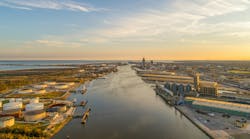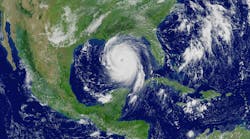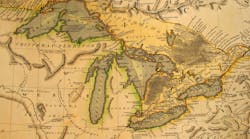Storm water management has become a requirement in many countries due to high population densities and rapid development. The reduced number of pervious surfaces, which allow storm water runoff to naturally reabsorb into the ground, can create environmental threats such as flooding and erosion of natural areas. Developing countries do not yet have strict requirements regarding these surfaces, but face added concerns about deteriorating water quality and preventing flooding that endangers human lives. Many of these countries are looking for methods to manage storm water, and subsurface storage is becoming an integral part of the solution.
When the U.S. Embassy in the Republic of Congo decided to expand, storm water storage was incorporated into the project scheme as an important design element. The initial concept plan was based on a system that involved stacking egg crate-shaped sheets on top of one another to form an underground void space.
Arkel Constructors was awarded the contractor position for the project and set out to finalize the design, looking for a cost-effective, American-made product. During its investigation, it discovered that the specified product only provided a 94% void space, and because it had to be shipped in stacked piers—the same way it would ultimately be installed—it would be shipping 94% air from the U.S. to the Republic of Congo via cargo ship.
After researching other potential solutions, Arkel contacted Brentwood to learn more about the StormTank Module system. It learned about its increased void space (97%) , high strength (HS-25 load rated) and ability to be shipped unassembled. These advantages encouraged Arkel to explore the possibility of converting the existing plan to a Module system. It was impressed by the expertise of Brentwood’s design team and the company’s previous involvement with another U.S. Embassy project in Africa. The contractor requested a quotation. It turned out to be more cost-effective than the originally specified product, so it opted to convert to the StormTank Module system.
The manufacturer’s design team supplied calculations and layouts to meet the initial design volume and site constraints so the project consultant could integrate them into the broader site expansion plan. As that plan was tweaked prior to finalization, the manufacturer also worked to adjust the shape of the system to ensure it would support the final design surface and application as well as uphold other important criteria such as drainage connections, decorative landscaping features and walls needed for the facility.
Once approved, Brentwood supplied the material from its Reading, Pa., facility to the local commercial port. Arkel had limited equipment to work with for the installation, so it reached back out to the manufacturer to evaluate options for excavating and preparing the base, as well as backfilling and final grading. The teams communicated back and forth to select equipment and determine necessary practices for a successful installation. Once the logistics were worked out, Arkel also assembled all StormTank Modules on site for approximately 30,000 sq ft of storage space.
The installation was completed in the spring of 2017, providing storm water storage to reduce flooding impacts on and off the embassy compound. Brentwood is always excited to work with new partners and proud to have supported the embassy’s expansion as the officials there work to serve and protect U.S. citizens in the Republic of Congo.







